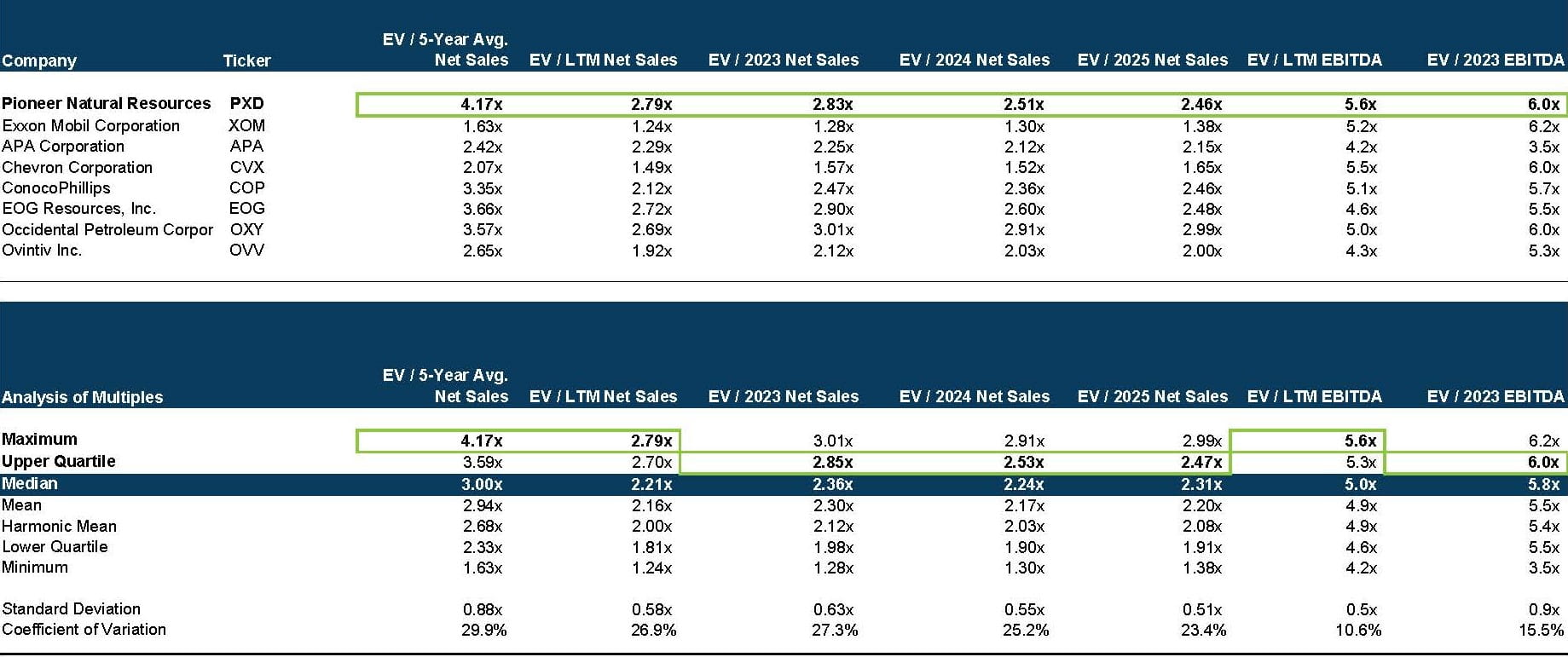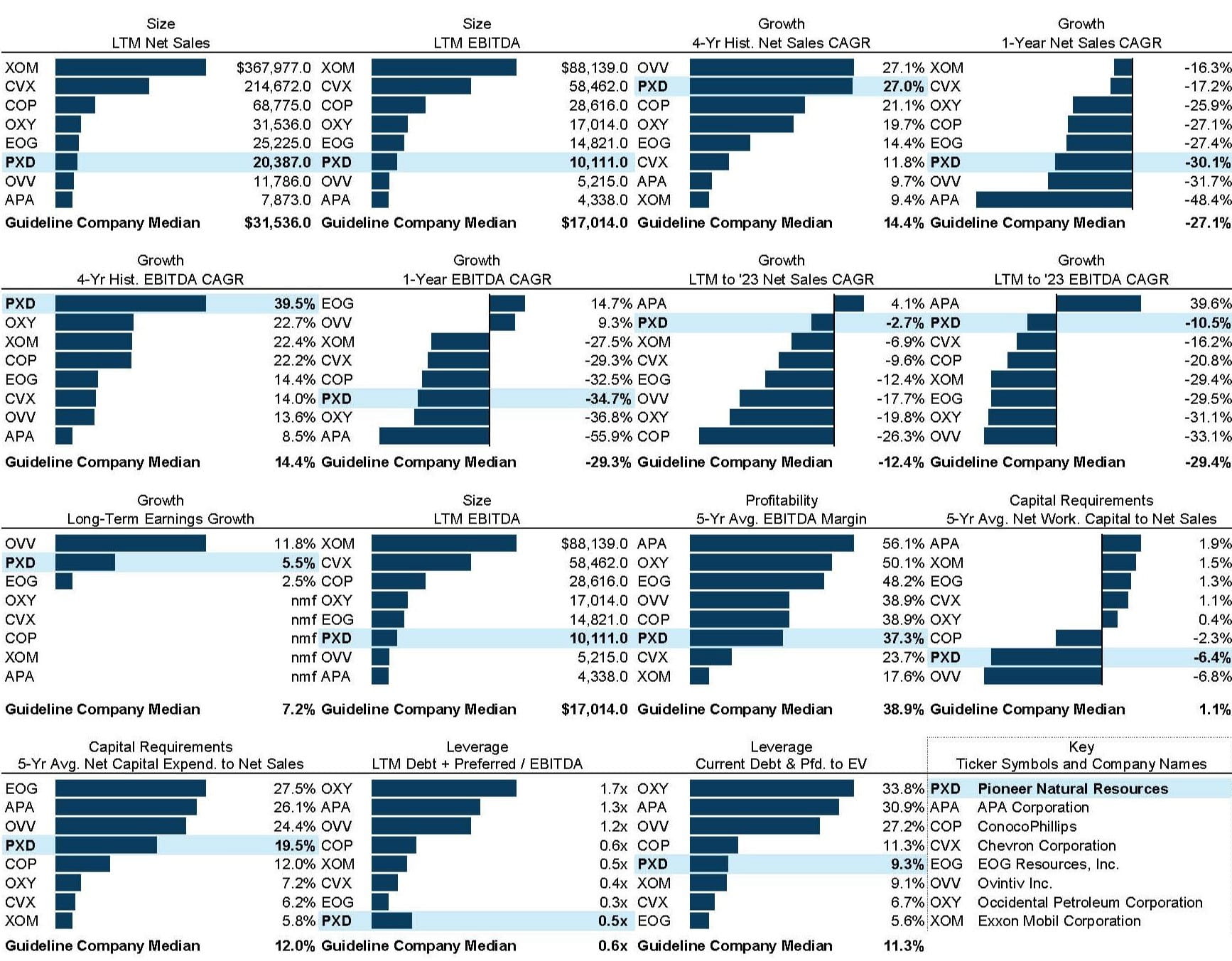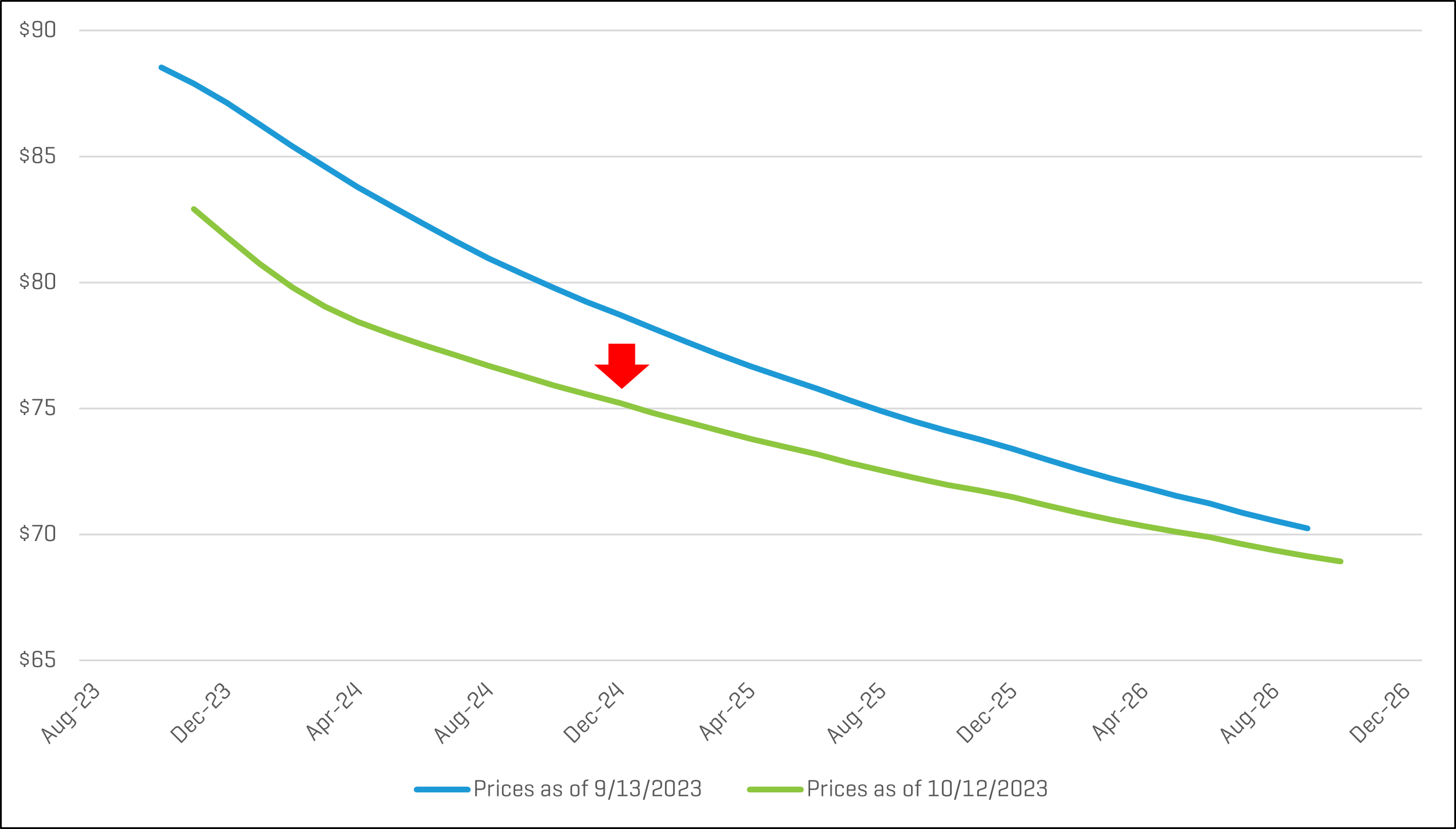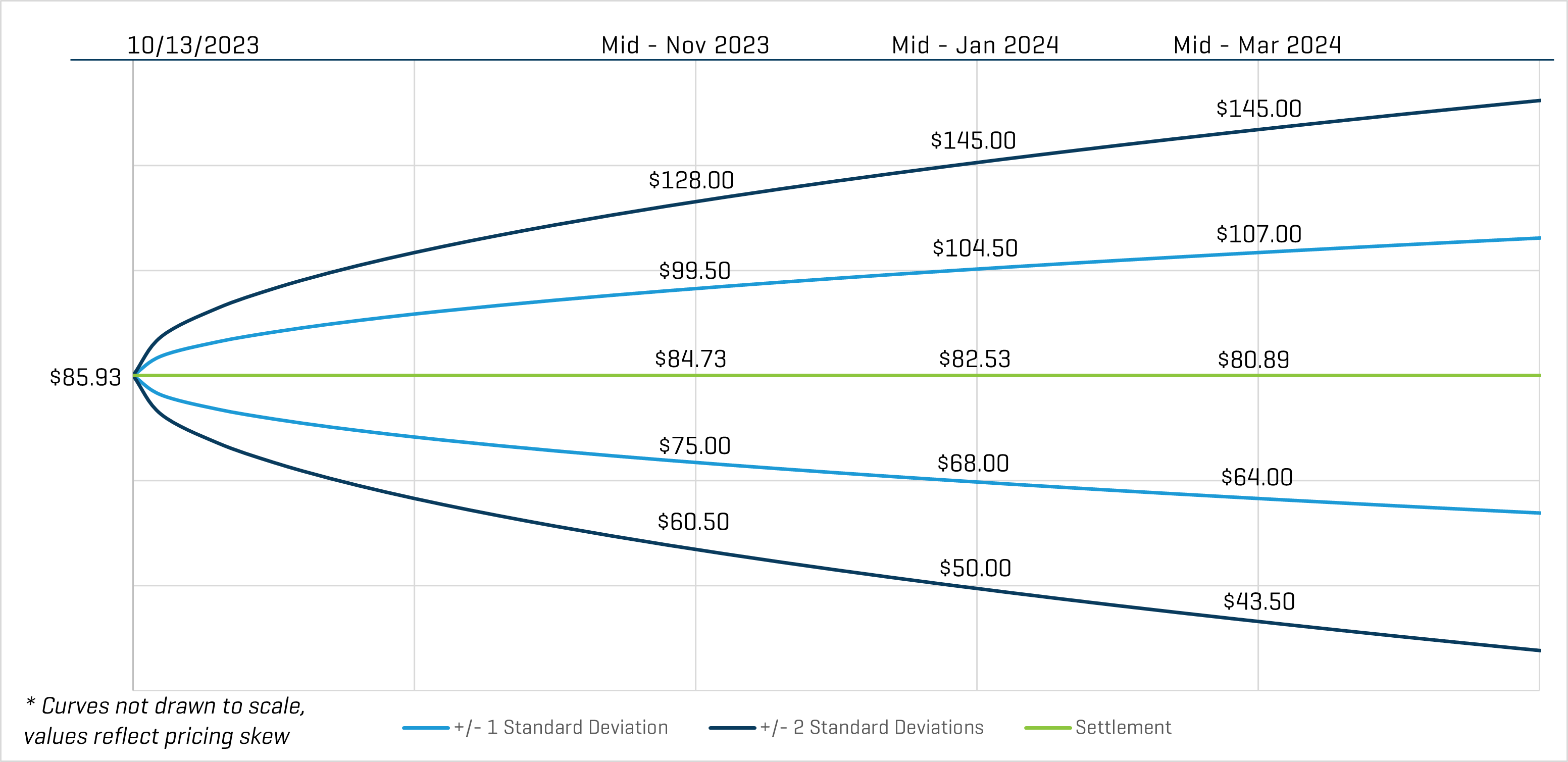ExxonMobil's Announced Acquisition of Pioneer Natural Resources Could It Be Considered a Value Acquisition?
ExxonMobil's Announced Acquisition of Pioneer Natural Resources Could It Be Considered a Value Acquisition?
On CNBC’s Squawk Box newscast, Exxon’s CEO Darren Woods stated, “We are always interested in a value acquisition” (April 28, 2023). CNBC reported (along with The Wall Street Journal and others) that Exxon was in talks with Pioneer for a potential acquisition, and on October 11, 2023, the deal was announced that Exxon plans to purchase Pioneer for $253 per share in an all stock transaction.
While it may be obvious that Exxon may always be interested in a value acquisition, does Pioneer Natural Resources (PXD) qualify as a value target? Value investing is an investment strategy that involves buying stocks or other assets that appear to be undervalued relative to their intrinsic value. The idea is to buy these assets at a price lower than their true worth and hold them until their market price reflects their inherent value. This approach is often contrasted with growth investing, which focuses on buying assets with strong potential for future earnings growth. However, by some valuation metrics, Pioneer seems “expensive” versus its peers. In fact, when Pioneer’s stock is compared against a group of other publicly traded E&P companies with operations in the Permian Basin, in many cases Pioneer appears to be the most expensive company in the group.1
Pioneer Natural Resources - Implied Pricing Multiples, October 5, 2023 (In Millions of U.S. Dollars)

Legend: EV = Enterprise Value; LTM = Last Twelve Months; EBTIDA = Earnings Before Interest, Taxes, and Depreciation
So why might Exxon’s CEO consider Pioneer to be a value acquisition? In addition to low prices, value stocks also typically have some of the following characteristics:
- Strong Fundamentals: The company has a solid balance sheet, good cash flow, and a sustainable business model, which might include low debt, consistent revenue, and a history of profitability
- Dividend Payers: Many value investors appreciate stocks that return value to shareholders through dividends, providing a steady income stream
- Margin of Safety: Value investors often seek a significant difference between the stock’s current price and its estimated intrinsic value as a buffer against potential losses
- Competitive Advantage: Companies with unique advantages over competitors, such as brand strength or regulatory barriers, can maintain or grow their market share
- Stable and Predictable: Firms with a history of steady earnings and low susceptibility to economic downturns or industry disruptions are often favored
- Low Price Multiples: Stocks with low price-to-book, price-to-earnings, or price-to-sales (P/S) ratios compared to their peers or historical averages can be indicators of potential undervaluation
- Good Management: Value investors also prioritize companies with competent and shareholder-friendly management teams
- Catalysts for Appreciation: Some value investors look for potential events that might lead the market to recognize a stock’s true value, such as restructuring or mergers
Based on a review of Pioneer’s historical performance, it has strong fundamentals, and it currently pays a strong dividend yield of approximately 7%. Per the table below, Pioneer has enjoyed good growth and has a relatively low debt burden against its asset base.2
Pioneer Natural Resources - Relative Rankings, October 5, 2023 (In Millions of U.S. Dollars)

When considering competitive advantages, however, it appears that the key factor for Exxon’s interest is Pioneer’s leasehold acreage located in the Permian Basin, considered to be the hottest play in America’s oil and gas industry. As the graphic below shows, Pioneer had a reported 850,000 net acres in the Permian Basin.3

Numerous analysts reported that this potential acquisition is driven by the high quality of Pioneer’s leasehold acreage and its proximate location to ExxonMobil’s own Permian Basin acreage.
Why Consider This a Value Acquisition?
Even though Pioneer’s stock does not appear inexpensive by many valuation metrics, Exxon is currently producing a lot of cash, fueling large dividends and stock buybacks for their shareholders. Large companies like Exxon may enjoy economies of scale, and the presence of additional Pioneer locations near Exxon’s existing acreage in the Permian may provide the opportunity for better utilization of drilling rigs and crews, as well as for the required fracking and other completion activities, and midstream/saltwater disposal well optimization. In Exxon’s press release announcing the transaction, Exxon expects its developed technology to be able to increase the estimated ultimate recovery from Pioneer’s reserves. These upside opportunities may be enough to make an expensive stock appear relatively inexpensive to an acquiror like ExxonMobil.
WTI Strip Prices Decrease
Despite the recent turmoil in Israel, spot prices and futures prices for the West Texas Intermediate (WTI) contract decreased by approximately $5.00 per barrel in the near term and decreased approximately $1.00 over the longer term since last month.
WTI Strip Prices - One Month Change

As shown, the oil price curve remains in a state of backwardation, reflecting the market’s expectation of lower future spot prices.
Oil Price Outlook
The price distribution below shows the crude oil spot price on October 13, 2023, as well as the predicted crude oil prices based on options and futures markets. Light blue lines are within one standard deviation (σ) of the mean, and dark blue lines are within two standard deviations.
WTI Crude Oil $/BBL

Based on these current prices, the markets indicate there is a 68% chance oil prices will range from $68.00 and $104.50 per barrel in mid-January 2024. Likewise, there is roughly a 95% chance that prices will be between $50.00 and $145.00. By mid-March 2024, the one-standard deviation (1σ) price range is $64.00 to $107.00 per barrel, and the two-standard deviation (2σ) range is $43.50 to $145.00 per barrel.
Key Takeaways
Remember that option prices and models reflect expected probabilities, not certain outcomes, but that does not make them any less useful. Throughout most of 2023, crude oil spot prices fluctuated within the range of $70 to $80 per barrel. Over the past two month we have observed spot prices primarily above that range, with a year-to-date high as of this report around $95.00 per barrel. With the recent increase in prices, volatility in futures prices have also increased, as evidenced by the increase in futures price ranges. Comparing the four-months futures prices (March 2024 prices of this report versus February 2024 prices of last month’s report), the spread for the 1σ range increased $9.50 per barrel, and the spread for the 2σ range increased $21.00 per barrel. Despite these recent increases, futures price ranges are still lower compared to 2022. For mid-March 2024 pricing as of October 13, 2023, the 1σ range had a spread of $43.00 per barrel, and the 2σ range has a spread of $101.50 per barrel. For comparison, in 2022 we observed 1σ and 2σ price ranges in excess of $65.00 and $150.00, respectively.
- S&P Capital IQ, Inc.
- S&P Capital IC, Inc. and Pioneer Natural Resources financials. As applicable, results reported in foreign currencies were converted at the prevailing exchange rate on the Valuation Date.
- 2022 Annual Report, Pioneer Natural Resources






